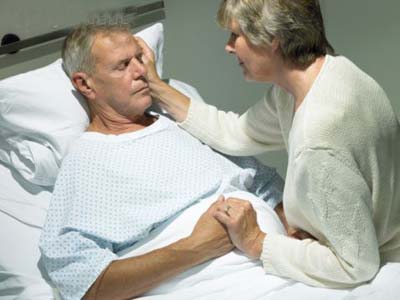
Blood carries oxygen and nutrients to the brain. When ischemic brain, the brain cells will stop working and will die in a few minutes.
Consequently, the body region of the brain that control due to
discontinued operations, resulting in paralysis, numbness numbness half,
unable to speak or coma. The cause of cerebral ischemia can be broken switch or blood vessels.
There are several types of stroke? Why is a stroke?
- Cerebral infarction: the brain blood vessels are blocked as brain ischemia and necrosis.
- Attack transient ischemic: similar cases, but blood vessels should inform themselves fully recovered within 24 hours.
The two main causes clogging of blood vessels:
+ Narrowing the blood vessels and then switch: close by fat plaques in the arteries thicken gradually narrowing of heart arteries.
+ A blood clot stuck float up and clog blood vessels:
usually caused by heart disease or stenosis arrhythmia, heart valve
insufficiency causing blood stasis, closed blood clots in the heart,
then goes up to block a brain artery cerebral.
- Hemorrhage: ruptured blood vessels bleeding, brain tamponade.
- Hemorrhage subarachnoid space: blood vessel aneurysm and rupture of blood flow into the void spaces surrounding the brain.
Who is having a stroke?
That older people, people with high blood pressure (BP), diabetes,
atherosclerosis, increased fat (cholesterol) in the blood, heart
disease, smoking, alcoholism, obesity, sedentary ...
What to do when the stroke itself?
- Support patients (BN) so that they are not falling, injury.
- For patients lying down, leaning to one side. If the patient is vomiting every conversation viscous hooks for easy breathing patients.
- Insert the right patients to the nearest health facility.
- If the nearest hospital treatment are eligible for referral should not go xa- as far as possible transfer sicker.
- Do not drink or arbitrarily small for BP-lowering medication or any other medication.
- No waiting to see if the patient does not get better.
- Do not scrape the wind, cut officiate, immolate ...
Treatment of hypertension how?
- When not being TBMMN, to treat high BP and often positive, continuous lifetime.
- When was TBMMN, BP lowering medication should be cautious.
-When TBMMN just happened, hypertension body responds to try to put the
blood on the brain, if BP lowering medication stronger and faster than
ischemic will do worse.
(Hence, BS only when HA HA medication to higher 180 / 100nnHg- Only BP
lowering medications slowly, not using sublingual drops).

Helping patients in hospital
Family members can coordinate with your doctor to patient care at the hospital.
- Turn back, change posture of the patient every hour to prevent ulcers.
- Helping patients make oral hygiene every day 2-3 times.
- Feeding follow the instructions to avoid choking, avoid food ọc:
Feeding the sitting position (if allowed BS) or head elevation of 30
degrees; spoon put small portions of food, patients wait swallowing is then fed to. If feeding tube to be nurses (nurse) test tube, to eat, to drink and drugs.
- Massage the muscles, movement of the arms and legs to match patients
to blood circulation and prevent joint stiffness, muscle atrophy. Tap campaign to help speed recovery.
What to do after discharge?
- Taking prescription drugs.
- Re-examination appointments for continuous treatment and medication adjustments in accordance with the patient at the time. Discuss with BS treatment at discharge to choose where possible re-examination and most convenient.
- Tap campaign at home or at the gym physiotherapy.
- Try to give yourself BN activities of daily living, with the help of
family members to be able to recover soon and live independently. It is possible to modify some things easier for patients to use. Should not completely replace the BN.
- For patients eat strictly according to instructions mode (eg eating
crackers, openers with hypertension, gauge lines, reducing powder with
diabetes).
- Motivate, encourage patients to practice.
- Monitoring and continuous lifelong treatment for hypertension, diabetes, atherosclerosis, cardiovascular disease ...
Avoid common mistakes with the voluntary cessation of treatment as seen in healthy people and to have all patients.

Không có nhận xét nào:
Đăng nhận xét